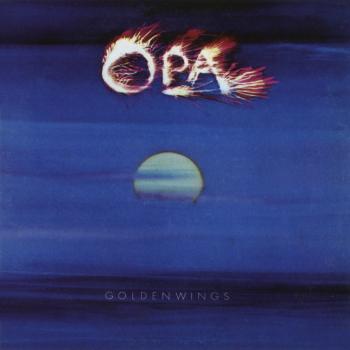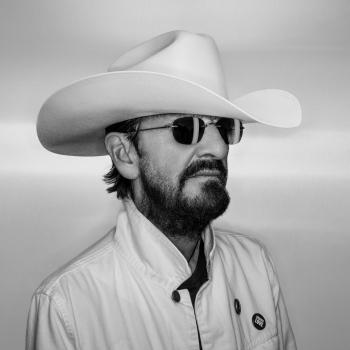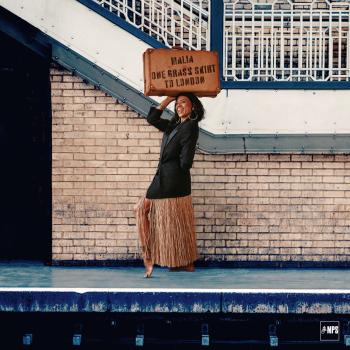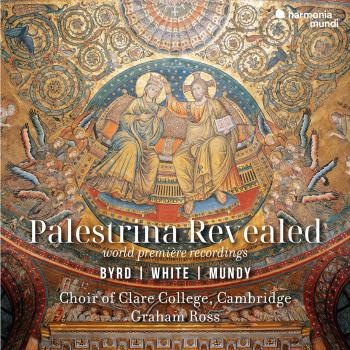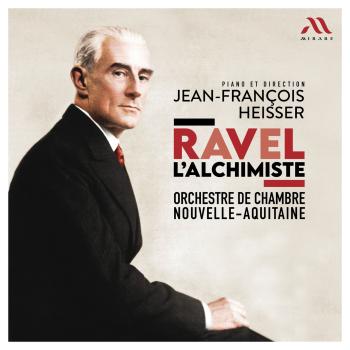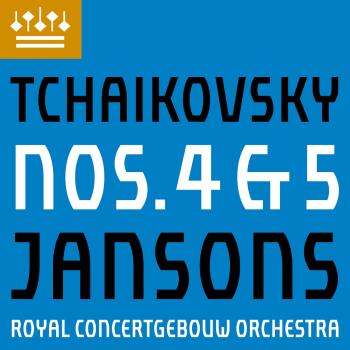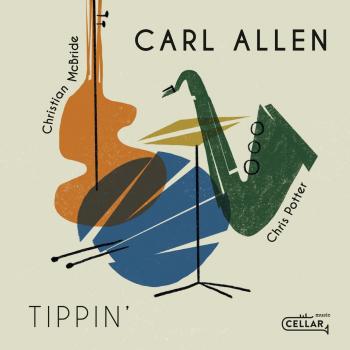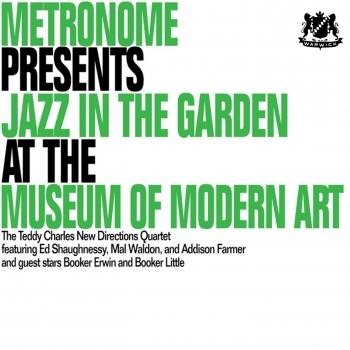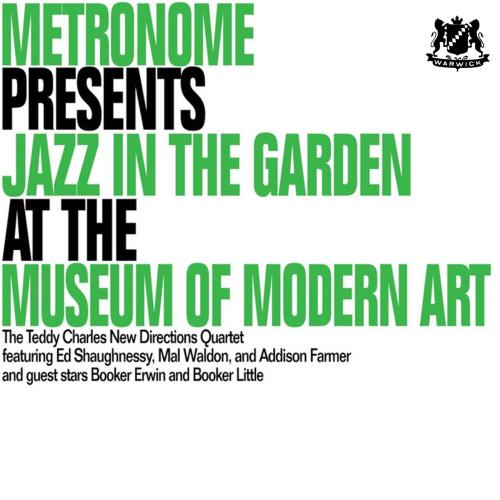
Metronome Presents Jazz in the Garden at the Museum of Modern Art Teddy Charles New Directions Quartet
Album info
Album-Release:
1960
HRA-Release:
07.07.2021
Album including Album cover
- 1 Scoochie 06:55
- 2 Cycles 05:45
- 3 Embraceable You 04:45
- 4 Blues De Tambour 06:12
- 5 Take Three Parts Jazz: Route 4 /Byriste / Father George 12:26
- 6 The Confined Few 08:14
Info for Metronome Presents Jazz in the Garden at the Museum of Modern Art
"Jazz in the Garden at the Museum of Modern Art" is a Teddy Charles jazz album recorded live at the Museum of Modern Art in August 1960 and released in February 1961.
Teddy Charles is a true rarity: a jazz musician who largely retired from the business. A skillful if not overly distinctive vibraphonist and (early in his career) quite capable on piano and drums, Charles was as important for his open-minded approach in the 1950s towards more advanced sounds as he was for his playing. He moved to New York to study percussion at Juilliard in 1946, but instead became involved in the jazz world. He had short stints with the big bands of Randy Brooks, Benny Goodman, Artie Shaw, Buddy DeFranco and Chubby Jackson from 1948-51 and then played with combos headed by Anita O'Day, Oscar Pettiford, Roy Eldridge and Slim Gaillard. He also became a member of the Jazz Composers' Workshop (1953-55) along with Charles Mingus and Teo Macero, opening his style up to the influences of classical music and freer improvising. Charles, who recorded with Mingus, Miles Davis and Wardell Gray, among many others, began leading his own stimulating record dates in 1951, and by 1953 he was also working as a record producer, a field that took much more of his time from 1956 on. He led his own sessions for Prestige, Atlantic, Savoy, Jubilee, Bethlehem (where he produced around 40 records, mostly for other artists), and Warwick from 1951-60, but was hardly heard from in the 1960s, other than a 1963 set for United Artists. Charles relocated to the Caribbean, where he opened a sailing business. After participating in a 1980 jam session, Teddy Charles eventually moved back to New York, making a "comeback" record for Soul Note in 1988, but still remaining semi-retired from music." (Scott Yanow, AMG).
Teddy Charles, vibraphone
Booker Little, trumpet
Booker Ervin, tenor saxophone
Mal Waldron, piano
Addison Farmer, bass
Ed Shaughnessy, drums
Digitally remastered
Teddy Charles
A chance-taking vibraphonist who was one of the pioneers of Third Stream music, Teddy Charles (b. 1928) was never shy to perform in advanced settings. Early on, Charles (who was born Theodore Charles Cohen) played piano and drums, even studying percussion for a time at Juilliard. His main interest, however, became playing jazz on the vibraphone. His sound was different than that of Lionel Hampton, Red Norvo, and Milt Jackson, and he was very open to the music of bebop and the styles that followed in the 1950s.
Charles played with the big bands of Randy Brooks, Benny Goodman, Artie Shaw, Buddy DeFranco, and Chubby Jackson during 1948-1951, also working with smaller groups led by Jackie Paris, Anita O’Day, Oscar Pettiford, Roy Eldridge, and Slim Gaillard. As a member of the Jazz Composers’ Workshop during 1953-1955, along with Charles Mingus and Teo Macero, Teddy Charles sought to combine together aspects of classical music with advanced jazz.
Charles, who recorded with Mingus, Miles Davis, Wardell Gray, Bob Brookmeyer, and Mal Waldron, led a series of stimulating sessions for Prestige during 1951-1956. New Directions has Charles playing marimba, xylophone, and bongos in addition to vibes in trios and quartets, performing mostly standards but hinting at the avant-garde. Collaboration: West has Charles interacting with trumpeter Shorty Rogers and the reeds of Jimmy Giuffre, pushing West Coast jazz way ahead. 1955’s Evolution, which features Charles doubling on piano, is a stimulating quartet date with tenor saxophonist J.R. Monterose and bassist Charles Mingus.
Charles increasingly worked as a record producer after 1956 and deemphasized his playing. After recording in 1963, he switched careers altogether, buying a couple yachts and opening a sailing business. Other than a brief comeback recording in 1988, Teddy Charles has mostly been outside of music during the past 40 years, having made his mark on jazz in the 1950s.
This album contains no booklet.

